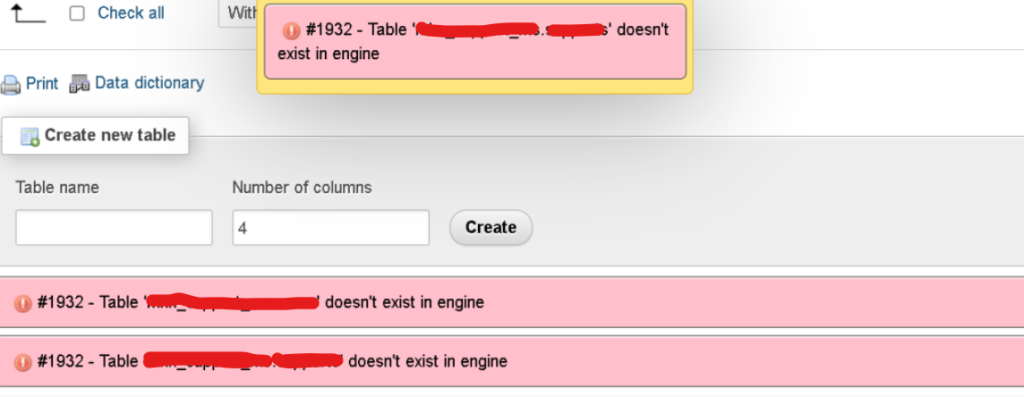
Encountering MySQL error #1932, which states that a table doesn’t exist in the engine, can be frustrating and disruptive to your database operations. However, understanding the root cause of this error and the steps to resolve it can help you quickly get your MySQL database back on track.
Understanding the Error
MySQL error #1932 typically arises due to a misconfiguration or corruption within the MySQL database engine. When MySQL fails to recognize the existence of a table, it can lead to this error message. Several factors could contribute to this issue, including:
- Corrupted Data Files: Corruption within the data files associated with your MySQL tables can prevent MySQL from properly recognizing the tables.
- Misconfigured Data Directory: If MySQL is not configured to look in the correct data directory for your tables, it may fail to locate them.
- Incomplete Operations: Interrupted or incomplete table creation or modification operations can leave MySQL in a state where it does not properly register the affected tables.
Steps to Resolve the Error
To resolve MySQL error #1932 and restore normal database operations, follow these steps:
- Check MySQL Configuration File: Locate and open the MySQL configuration file (commonly named
my.cnformy.ini). This file contains essential settings for MySQL, including the data directory configuration. - Verify Data Directory Configuration: In the MySQL configuration file, check the
innodb_data_file_pathparameter to ensure it specifies the correct data directory where your tables are stored. For example, the parameter may look like this:innodb_data_file_path = ibdata1:10M:autoextend. - Ensure Existence of Data Files: Navigate to the directory specified by the
innodb_data_file_pathparameter (e.g.,C:/xampp/mysql/data/) and verify the existence of the data files associated with your tables. In particular, check for the presence of theibdata1file, which is crucial for InnoDB storage engine operations. - Copy Missing Data Files (if necessary): If the required data files are missing from the data directory, you can attempt to restore them from a backup. For instance, you may find a backup copy of the
ibdata1file in a backup directory (e.g.,C:/xampp/mysql/backup/). Copy the missing data files to the appropriate location within the data directory. - Restart MySQL Server: Once the required data files are properly placed, restart the MySQL server to apply the changes and ensure that MySQL correctly recognizes the tables.
More topics on Bug fixing: